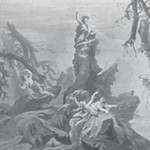 III. RICHARD WAGNER’S FESTIVAL (1876-1882)
III. RICHARD WAGNER’S FESTIVAL (1876-1882)
1 – The first Bayreuth Festival (1876)
Despite the rehearsals being started a year earlier… the singers were still not ready.
Even worse, just a few days before the premiere, there was chaos. Wagner clashed with Richter on the tempi to follow in the score, creating discomfort among the musicians. And as if the artistic and musical disagreements were not enough, the dragon that Siegfried had to conquer in Act II of the eponymous opera had no neck: in fact, on the three cases shipped from London and that each contained a part of the “dangerous animal”, the one that contained the neck was sent… to Beirout! A misrouting issue that would be fatal to the panache of the monster on stage!
 But besides the approximations of certain singers, mostly unprepared for such innovative and unconventional music, besides the fears of the Rhinemaidens to embark in their nacelles conceived by the theatrical engineer Karl Brandt and besides a neckless dragon, everyone went to the premiere (established as 13 August, 1876) which, with The Rhinegold, would inaugurate the first of the three cycles that have been planned.
But besides the approximations of certain singers, mostly unprepared for such innovative and unconventional music, besides the fears of the Rhinemaidens to embark in their nacelles conceived by the theatrical engineer Karl Brandt and besides a neckless dragon, everyone went to the premiere (established as 13 August, 1876) which, with The Rhinegold, would inaugurate the first of the three cycles that have been planned.
And there were many people present: a lot of guests, mostly members of royal families, among whom King Ludwig II of Bavaria (who, shunning protocol as much as possible, would only attend the dress rehearsal), Kaiser Wilhelm II, Emperor Dom Pedro of Brazil … The small town of Franconia and its inhabitants who were not used to social events did the best they could to receive these distinguished guests. With some approximations … The Emperor of Brazil, who resided in one of the small hotels in the city, was asked to complete the register. In the “name” box, the disciplined guest complied and wrote “Dom Pedro“, and in the “occupation” one, “Emperor“!
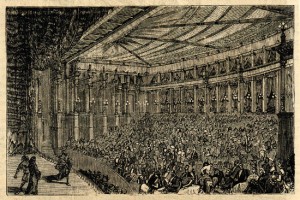 Many friends and patrons of the Wagners came for the inauguration of the Festival: it was for the composer a way to innocently bring together under one roof his family and his love interests: Judith Gautier, Mathilde Wesendonck… and obviously her husband, Otto. But what was the most significant in this high-society audience was undoubtedly the presence of the musical intelligentsia of the time, with Camille Saint-Saëns, Franz Liszt, Anton Bruckner or even Piotr Ilyitch Tchaikovsky…
Many friends and patrons of the Wagners came for the inauguration of the Festival: it was for the composer a way to innocently bring together under one roof his family and his love interests: Judith Gautier, Mathilde Wesendonck… and obviously her husband, Otto. But what was the most significant in this high-society audience was undoubtedly the presence of the musical intelligentsia of the time, with Camille Saint-Saëns, Franz Liszt, Anton Bruckner or even Piotr Ilyitch Tchaikovsky…
The Festival had undoubtedly proven very successful. It is true that the building, with the audacity of its conception, as well as the ritual that Wagner imposed (the room plunged into total darkness, the horns that bring the spectators back to their seats at the end of the long intervals…) and even the advent on stage of the “music of the future“, all competed to surprise the guests. All those who attended this premiere left feeling like they witnessed both a musical and technological prowess. Without a doubt, they were right.
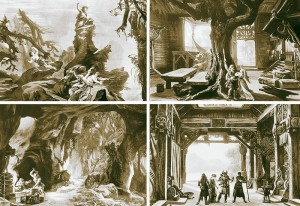 At the end of the performance of Twilight of the Gods that closed the third cycle of The Ring in Bayreuth, the question of the artistic… and financial review arose.
At the end of the performance of Twilight of the Gods that closed the third cycle of The Ring in Bayreuth, the question of the artistic… and financial review arose.
Did the success of the first edition of the Festival in 1876 indeed fully satisfy Wagner’s ambitions … as well as his fervent admirers’? The answer lies in a sentence of the critic Paul Lindau: “It seems to me that Wagner’s fervent supporters were not as satisfied as they had hoped, even though his detractors were not as disappointed as they had feared”. A “mixed” answer that sums up quite well the atmosphere in the wake of the first The Ring performance.
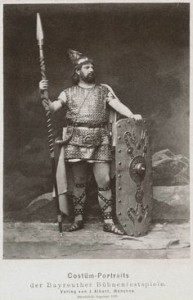 Certainly, from a strictly musical point of view, the success was undeniable, even if certain singers – according to the composer… and critics! – did not live up to the score. We know from the testimonies of Heinrich Porges and Richard Fricke who attended the performances – that the tenor Gerhard Unger (who played Siegfried on stage) did not live up to the honor he was given to perform the role in Bayreuth, unlike Karl Hill, in the role of Alberich, who was a revelation.
Certainly, from a strictly musical point of view, the success was undeniable, even if certain singers – according to the composer… and critics! – did not live up to the score. We know from the testimonies of Heinrich Porges and Richard Fricke who attended the performances – that the tenor Gerhard Unger (who played Siegfried on stage) did not live up to the honor he was given to perform the role in Bayreuth, unlike Karl Hill, in the role of Alberich, who was a revelation.
But the music was there to save the few approximations of the singers. At the end of the Twilight of the Gods production and during the banquet that was organized for the whole crew, Wagner pointed at his friend Franz Liszt and declared before the assembly: “Here is the one to which the greatest tribute must be paid! Without him you undoubtedly would not have heard a single note from me today.” Vibrant tribute from the student who had “surpassed” the Master!
Artistically, the success was more mixed, at least if one considers the original ambitions of the composer.
The ambiguity was largely due to the fact that Wagner wanted to abstract his work from the usual jumble pertaining to the productions of his time on the one hand, but – presumably striving for perfection – he accorded to the details of machinery and staging such precision, and even such predominance… that the result was finally a far cry from the abstraction initially dreamed by the composer!
As an example, the same critic Paul Lindau commented again the appearance of the dragon in the second act of Siegfried: “one no longer thinks of the work of art, one wonders if the dragon will move forward even more, if it will stand back up, if it can move its tail not only to the left but also to the right, if it can fall over, how Siegfried will touch it, and what will be the behaviour of the beast when it will receive the mortal blow. Wagner, who generally has high self-consciousness, shows here a quite surprising modesty”. The fierce Eduard Hanslick, a fervent opponent of the Wagnerian art which he found “pretentious” – also did not pull punches with the acidity in his pen; for the critic, Wagner limits his ambition “to making music for a series of magical machineries”! Wagner himself confided according to Fricke: “next year, we will do everything differently!”
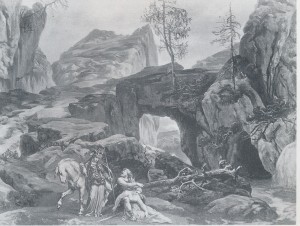 However, there were undoubtedly in this first Festival artistic innovations and some astonishing technical feats.
However, there were undoubtedly in this first Festival artistic innovations and some astonishing technical feats.
First, the famous pitch-black conditions wanted by Wagner in the room (NB: for the record, shouldn’t the Wagnerian innovations of Bayreuth be to thank for our current movie theatres arranged in amphitheatres and plunged into darkness so as to better focus the concentration of the spectators on the screen?). That being said and in order not to shock his brand new audience, Wagner, careful, “scaled his ambitions down” and planned not complete darkness but a very subdued lighting. Due to time constraints, the gas lighting originally planned could not be installed. The Emperor Wilhelm of Prussia who had warned that he would leave at the first act of The Rhinegold, almost fell while leaving his box. Wagner, who held him by the arm, would not fail to remind his friends many times how he saved the Emperor and thereby… the destiny of Germany!
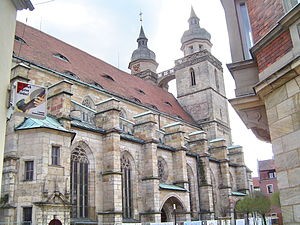 For the small town of Bayreuth, unaccustomed as was noted, to such a parade of celebrities and crowned heads, the outcome was more than satisfactory. Looking back at the history of the Festival, the municipality of Bayreuth had, since the inauguration of the first Festival in 1876, quickly made profitable the Bürgerreuth land initially made available to Wagner! From the first edition of the festival, the temple merchants made their appearance in Bayreuth by offering scores of souvenirs, Wagner or the Nibelungs-branded objects and other postcards, which led historian Joseph Rovan to later say that Wagner has been “the first great artist in the world of plush chairs and locomotives, of gas lighting and professional journalists. “
For the small town of Bayreuth, unaccustomed as was noted, to such a parade of celebrities and crowned heads, the outcome was more than satisfactory. Looking back at the history of the Festival, the municipality of Bayreuth had, since the inauguration of the first Festival in 1876, quickly made profitable the Bürgerreuth land initially made available to Wagner! From the first edition of the festival, the temple merchants made their appearance in Bayreuth by offering scores of souvenirs, Wagner or the Nibelungs-branded objects and other postcards, which led historian Joseph Rovan to later say that Wagner has been “the first great artist in the world of plush chairs and locomotives, of gas lighting and professional journalists. “
In conclusion, the members of the Festival crew and the spectators were aware that with this first edition of 1876, they witnessed a major event in the History of Music, an event quickly described as a unique experience. And then overall, despite the setbacks inherent in staging, the atmosphere was optimistic. Quite proud of this challenge that he managed to take up against all odds, the composer was thus thinking about a second edition of the Festival. And it happened, the following year.
However, economically, the first edition turned out to be a total catastrophe.
Certainly, the money was gleaned from all possible sources to build the Festival Theatre. But for so much debt. Even before the performances, the expenses incurred for the construction of the building as well as for the creation of sets, costumes and all the expenses pertaining to the artists were much greater than anticipated. The day before the inauguration of the Festival, the overall deficit amounted to nearly 150.000 marks. In the wake of the first three cycles that formed this very first Festival, the astronomical deficit amounted to 148,000 marks.
The news reached the composer while he was traveling to Verona. Not only had it been necessary to give concerts upstream in order to finance it, to not pay the singers (or the conductor) by decreeing that they were “invited”, but it was necessary to give concerts after the fact to fill the deficit! Taking back his eternal pilgrim’s staff, Wagner, at the age of sixty-four, had to give in London a series of concerts in the spring of 1877. Unfortunately, this series succeeded in paying only a tenth of the debt left by the Festival.
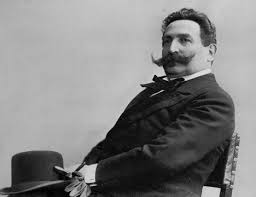 It was then that Wagner’s destiny crossed (again) that of the man who, in the meantime, had become director of the Leipzig Opera, Angelo Neumann. The man of the hour! Wagnerian from the very beginning (he had himself, in his youth and during his career as a singer, performed some roles from Wagner’s operas), this strange character, simultaneously a lyrical artist, impresario then opera director felt invested with a double mission: make Wagner’s art known beyond the borders of Bayreuth by creating a touring company (The Wagner-Traveling-Theater) and support the Wagnerian project by negotiating the performance rights throughout Europe and by renting the sets and costumes of the original Bayreuth production of The Ring. Wagner resisted for a moment, but, crushed by debt, and always in the hopes of seeing the birth of a second Festival in Bayreuth, agreed. This decision thus provided subsidies that filled in part the colossal deficit of the first Festival.
It was then that Wagner’s destiny crossed (again) that of the man who, in the meantime, had become director of the Leipzig Opera, Angelo Neumann. The man of the hour! Wagnerian from the very beginning (he had himself, in his youth and during his career as a singer, performed some roles from Wagner’s operas), this strange character, simultaneously a lyrical artist, impresario then opera director felt invested with a double mission: make Wagner’s art known beyond the borders of Bayreuth by creating a touring company (The Wagner-Traveling-Theater) and support the Wagnerian project by negotiating the performance rights throughout Europe and by renting the sets and costumes of the original Bayreuth production of The Ring. Wagner resisted for a moment, but, crushed by debt, and always in the hopes of seeing the birth of a second Festival in Bayreuth, agreed. This decision thus provided subsidies that filled in part the colossal deficit of the first Festival.
Besides this significant contribution, the artist turned to his royal friend and patron: and it was once again King Ludwig II of Bavaria that brought his financial support to eliminate his composer friend’s setbacks and partially filled the deficit; another help was neither here nor there for him!
But for Wagner, this meant that a second Festival was thus possible!
2 –To the second edition of the Bayreuth Festival: Parsifal (1882)
In the initial intent of the composer, nothing foreshadowed a second edition of his Festival in Bayreuth. In the early years when Richard Wagner was thinking about a Festival to stage Siegfried, the idea of a temporary one was appropriate, and even an absolute necessity, perhaps to better anchor it in an exceptional way. A kind of… “happening” before the hour would one say today!
Thus the composer then in exile in Zurich wrote to his friend Theodor Uhlig in September 1850: “If all this organization is accomplished according to my intentions, I will give three performances of Siegfried under the conditions envisaged, all three in the same week ; after the third session we will demolish the theater and burn the score.” (Letter to Theodor Uhlig, September 1850)
Guidelines that were also directly in line with this profession of faith of the composer that was the denial of ownership. Wagner was then a recent comrade in arms of Bakunin, he had furthermore just discovered the theses of Proudhon through his work that he had just thoroughly perused. Temporary therefore was the theater (“without using anything but beams and planks, a very primitive kind of theatre, the equipment of which would be limited to the sets and devices necessary for the performance of my Siegfried”), temporary also – or at least at the beginning- was the score. But there was a problem, or rather a host of problems.
In order to see his dream become reality, Wagner gave up his performance rights not only to King Ludwig II of Bavaria, but also to his patrons (Otto Wesendonck leading the way) as well as to Schott, his publisher. It wasn’t a matter of burning a score anymore which, first, no longer belonged to him. And no longer belonged to Bayreuth. What else can one say about the building (the Festspielhaus) the construction of which – besides the various contributions and from all sources – literally dragged down the finances of the “Bayreuth adventure”.
To these “details” of a material nature, Wagner, rather unhappy with the first edition of the Festival, toyed with the idea of improving his show in Bayreuth. It was no secret to anybody: aware of the staging details to fix, of the negligence in the distribution made in the first edition of 1876, and decidedly perfectionist, Wagner, while the first Festival was not yet finished, exclaimed: “Next year, we will do everything differently!”
And then there were those Wagner Societies and the Patronatsverein, which, in the wake of the production of the great work, found themselves deprived of so much hope and activity!
In September 1876, the Wagners left Bayreuth and Wahnfried for a long journey in Italy. In order to have a rest. Wagner, like any artist can be in the aftermath of an “artistic birth” as long and perilous as this adventure was, became depressed. He was in a foul mood. But he thought- and was already working – on his next masterpiece, Parsifal, who would be – the composer did not know – his ultimate masterpiece… and his swan song. Far from these southern festivities, the Festspielhaus remained closed. It would remain so for six years.
But progressively as the Parsifal project formed, Wagner of course thought about Bayreuth as the future and unique setting for the diamond that he was carving with great care. Without worrying with precision about the fate of his work this time. Even if the theatre was in debt, it was indeed built and the composer, without swimming in extreme opulence, then enjoyed, after so many years of uncertainty, a certain material comfort.
No need to sell the rights to his work. It belonged exclusively to the Bayreuth Theatre. Saving Parsifal for Bayreuth was already ensuring a certain perenniality to the Festival. Perhaps the composer even thought about the future of his wife, who was twenty-five years younger than him, and even his children’s future. This desire to keep Parsifal within the walls of Bayreuth was approved by Ludwig II: on 24 October, 1880, the king accepted Wagner’s wish that this last work “be given to Bayreuth exclusively” (letter from King Ludwig II of Bavaria to Richard Wagner).
But when the work, which was never to be performed in another theatre other than Bayreuth, was completed, he once more seeked King Ludwig II’s help. Who once again answered the call. And in 1880, Wagner announced to the patron committee the new festival for 1882.
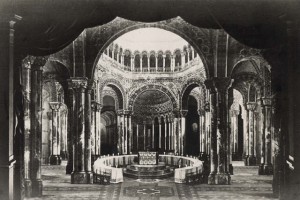 He took on this occasion the great decision to make the Bayreuth performances public. Parsifal was staged from July 26 to August 29, 1882 with a success that brought – finally – a surplus. Indeed, the receipts of the last fourteen performances, together with the sum of 180,000 marks raised by the committee, brought a surplus of nearly 145,000 marks, which then served as a guarantee fund for the festive performances; It was the starting point for the “Festspielfonds“.
He took on this occasion the great decision to make the Bayreuth performances public. Parsifal was staged from July 26 to August 29, 1882 with a success that brought – finally – a surplus. Indeed, the receipts of the last fourteen performances, together with the sum of 180,000 marks raised by the committee, brought a surplus of nearly 145,000 marks, which then served as a guarantee fund for the festive performances; It was the starting point for the “Festspielfonds“.
When Richard Wagner, the composer and “Project Manager”, died in 1883, he left behind him a cutting-edge Festival Theatre, two editions (1876 and 1882) that would definitely mark a turning point in the History of Music and Theatre forever, … as well as a legacy both heavy and complex to manage.
NC/SB
List of reference materials consulted for the realization of Section IV : BAYREUTH
![]()
If you wish to share further information about this article, please feel free to contact us !